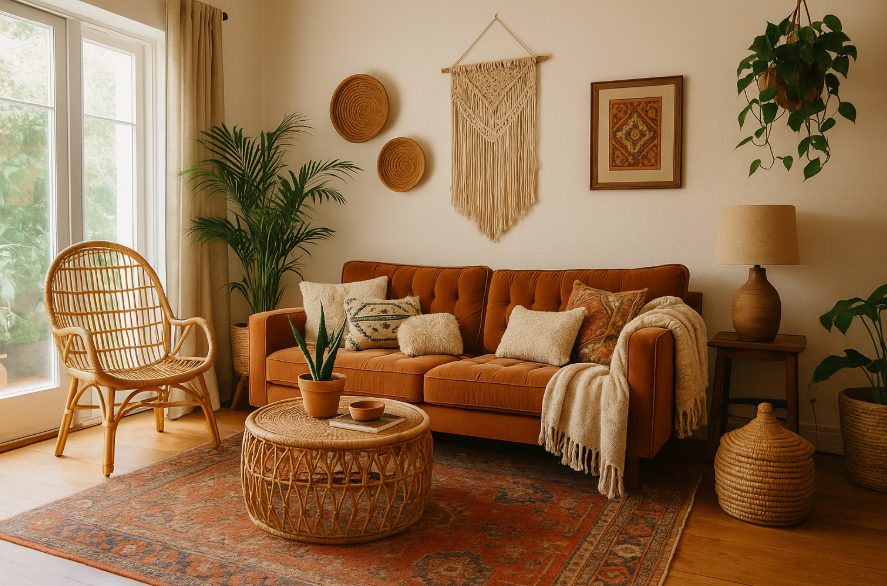🛏️ The Art & Science of Bedroom Interior Design: Where Comfort Meets Psychology
Introduction: More Than Just a Room The bedroom is more…
Introduction: More Than Just a Room
The bedroom is more than a place to sleep—it’s a personal retreat, a haven of calm, and often, the only room in the house truly dedicated to restoration. In today’s fast-paced world, designing a bedroom isn’t just about trends or aesthetics—it’s about psychology, lighting, color theory, and wellness. Here’s how interior design transforms your bedroom into a scientifically supported sanctuary.
🧠 Why Bedroom Design Affects Your Mental Health
Did you know that cluttered, harshly lit, or color-inconsistent bedrooms can trigger stress and reduce sleep quality?
According to Dr. Eva Selhub, a clinical health psychologist at Harvard Medical School, “Your environment influences your emotional and physiological state. The bedroom should be the most nurturing space in your home.”
✔ Tip: Eliminate visual noise. A minimalist layout with closed storage systems helps reduce cognitive overload.
🎨 Color Psychology in Bedroom Design
Color has a direct impact on our moods and sleep cycles. Here’s how to pick wisely:
| Color | Effect | Best For |
|---|---|---|
| Soft Blues | Lowers heart rate, calming | Sleep and relaxation |
| Muted Greens | Balances mood | Natural energy boost |
| Warm Neutrals | Creates cozy, safe atmosphere | Small or dark rooms |
| Lavender Grey | Combines elegance & serenity | Sophisticated spaces |
✔ Avoid: Bright reds or high-contrast black-white combos. They stimulate the brain and may delay sleep onset.
🛋️ Layout & Furniture: Function First, Then Aesthetics
A beautiful bedroom starts with functional zoning:
- Bed Placement: Place the bed in the “command position”—diagonally opposite the door without being in direct alignment. This concept, borrowed from Feng Shui, fosters security and ease.
- Storage: Opt for hidden storage beds or wall-mounted shelves in small bedrooms to reduce clutter.
- Reading Nooks: If space allows, add a soft chair near a natural light source for a cozy, low-stimulation reading zone.
🗨️ “I moved my bed to face a window and added blackout curtains. Now I wake up naturally, but sleep deeply. Huge difference!” — Amanda R., NYC
💡 Lighting: The Circadian-Friendly Approach
Overhead lighting isn’t enough—and often not even ideal.
✅ Layer your lighting:
- Ambient Light: Ceiling fixtures with dimmable bulbs.
- Task Light: Adjustable reading lamps.
- Accent Light: LED strips under the bed or headboard for a warm glow.
🔬 Science Insight: Exposure to warm-toned light before bed helps regulate melatonin production—crucial for quality sleep.
🌿 Natural Elements & Texture
Biophilic design is trending for a reason—it works. Incorporating natural materials like wood, linen, cotton, or jute helps create a sensory-rich yet calming environment.
🌱 Additions:
- Wooden headboards or floors
- Woven rugs
- Indoor plants like snake plant or lavender
👩🎨 Interior Designer Insight: “Natural textures invite tactile comfort, which subconsciously signals the brain to wind down.”
🖼️ Decor That Doesn’t Overwhelm
Wall art should soothe, not scream. Choose large, calming visuals—abstract art, nature scenes, or monochrome photography.
Mirrors can visually expand space but should never directly face the bed—according to both design psychology and sleep experts, reflections can create subconscious tension.
🧘 Final Touches: Scent, Sound & Ritual
A well-designed bedroom caters to all senses.
- Scent: Diffusers with lavender or sandalwood enhance relaxation.
- Sound: Soft acoustic panels or a white noise machine reduce distractions.
- Ritual Space: Keep a small table with a journal, candle, or essential oils to promote nighttime winding-down rituals.
Conclusion: Build a Bedroom That Heals
Bedroom interior design is both an art and a science. When colors, lighting, layout, and textures align with human psychology, your space becomes more than just functional—it becomes restorative.
So go ahead—reimagine your bedroom not as a place to crash, but as a sanctuary for true renewal.





